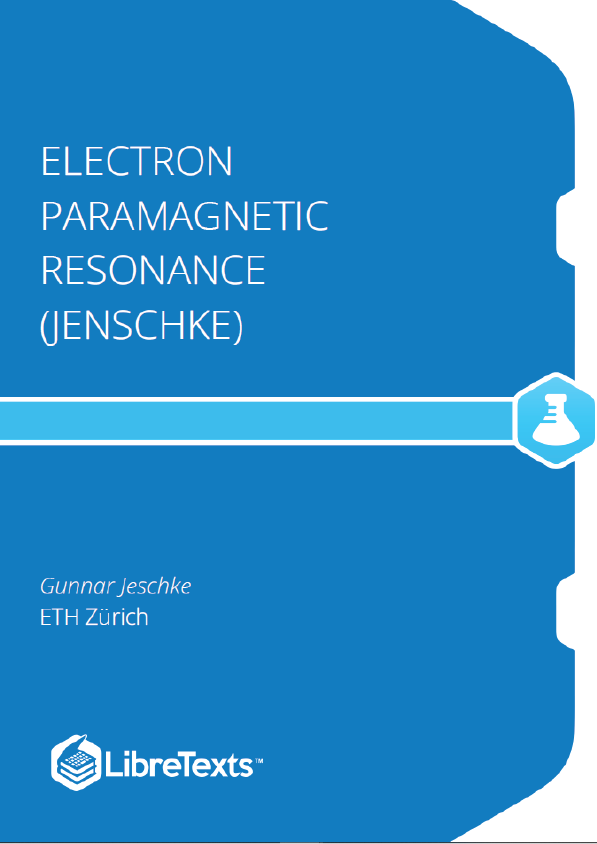1 – Introduction
General Remarks
Electron Paramagnetic Resonance (EPR) spectroscopy is less well known and less widely applied than NMR spectroscopy. The reason is that EPR spectroscopy requires unpaired electrons and electron pairing is usually energetically favorable. Hence, only a small fraction of pure substances exhibit EPR signals, whereas NMR spectroscopy is applicable to almost any compound one can think of. On the other hand, as electron pairing underlies the chemical bond, unpaired electrons are associated with reactivity. Accordingly, EPR spectroscopy is a very important technique for understanding radical reactions, electron transfer processes, and transition metal catalysis, which are all related to the ’reactivity of the unpaired electron’. Some species with unpaired electrons are chemically stable and can be used as spin probes to study systems where NMR spectroscopy runs into resolution limits or cannot provide sufficient information for complete characterization of structure and dynamics. This lecture course introduces the basics for applying EPR spectroscopy on reactive or catalytically active species as well as on spin probes.
Many concepts in EPR spectroscopy are related to similar concepts in NMR spectroscopy. Hence, the lectures on EPR spectroscopy build on material that has been introduced before in the lectures on NMR spectroscopy. This material is briefly repeated and enhanced in this script and similarities as well as differences are pointed out. Such a linked treatment of the two techniques is not found in introductory textbooks. By emphasizing this link, the course emphasizes understanding of the physics that underlies NMR and EPR spectroscopy instead of focusing on individual application fields. We aim for understanding of spectra at a fundamental level and for understanding how parameters of the spin Hamiltonian can be measured with the best possible sensitivity and resolution.
Chapter 2 of the script introduces electron spin, relates it to nuclear spin, and discusses, which interactions contribute to the spin Hamiltonian of a paramagnetic system. Chapter 3 treats the electron Zeeman interaction, the deviation of the value of a bound electron from the value of a free electron, and the manifestation of anisotropy in solid-state EPR spectra. Chapter 4 introduces the hyperfine interaction between electron and nuclear spins, which provides most information on electronic and spatial structure of paramagnetic centers. Spectral manifestation in the liquid and solid state is considered for spectra of the electron spin and of the nuclear spins. Chapter 5 discusses phenomena that occur when the hyperfine interaction is so large that the high-field approximation is violated for the nuclear spin. In this situation, formally forbidden transitions become partially allowed and mixing of energy levels leads to changes in resonance frequencies. Chapter 6 discusses how the coupling between electron spins is described in the spin Hamiltonian, depending on its size. Throughout Chapters , the introduced interactions of the electron spin are related to electronic and spatial structure.











